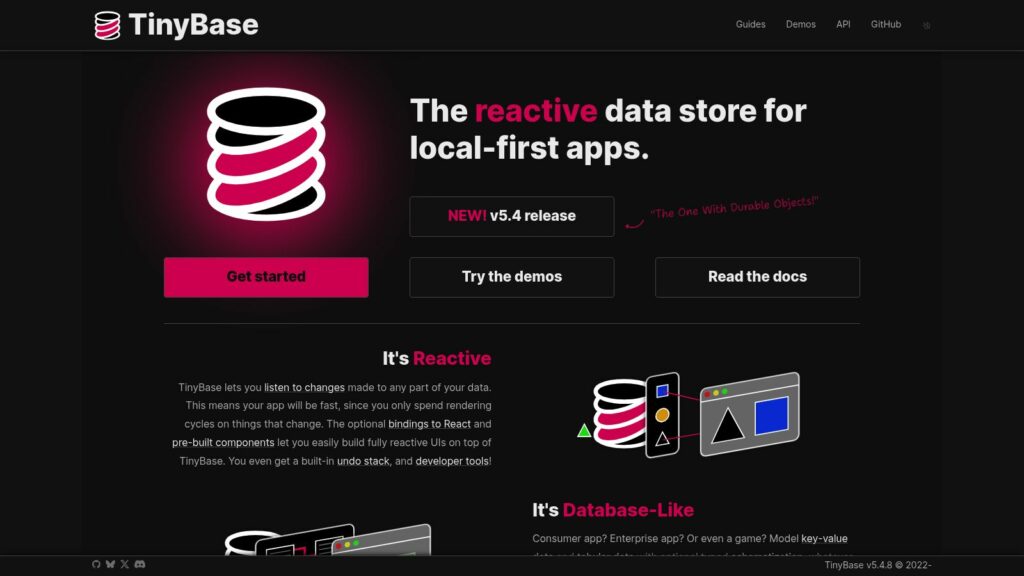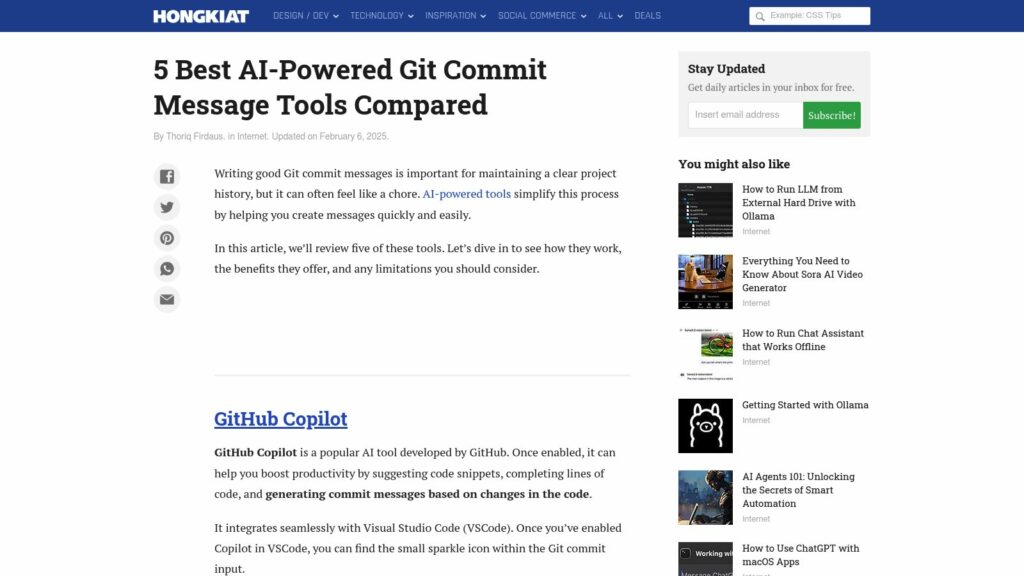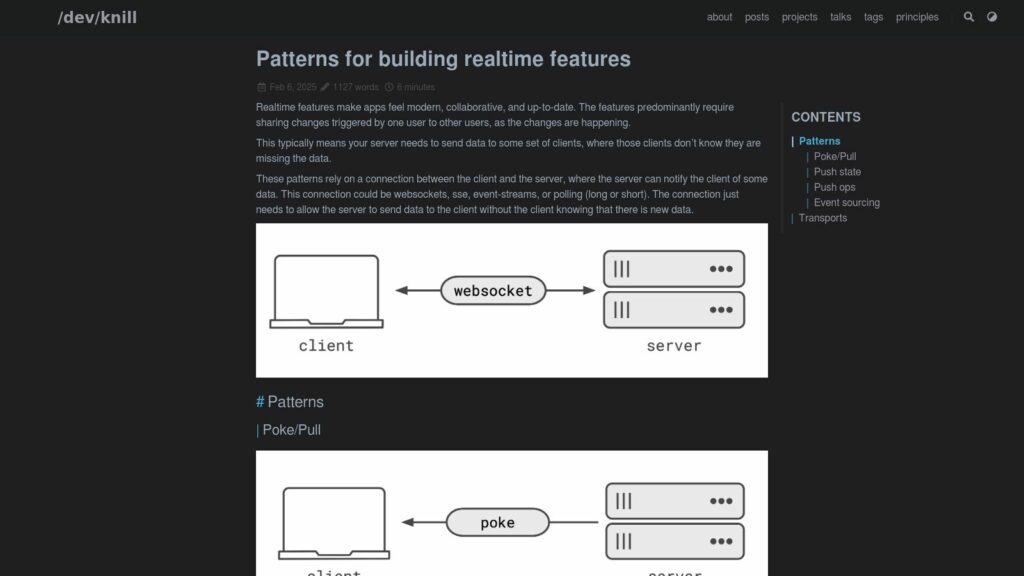TinyBase
TinyBase is a lightweight, reactive data store designed for local-first applications, supporting offline functionality. It promotes performance by allowing real-time listening to data changes and integrates easily with React for building UIs. Key features include: a database-like structure for key-value and tabular data, native CRDT support for synchronization across multiple clients, and persistence options to various storage systems. It's modular, with a minimal size of 5.3kB and extensive documentation, making it suitable for diverse applications while ensuring full functionality without dependencies. The latest version is v5.4.












